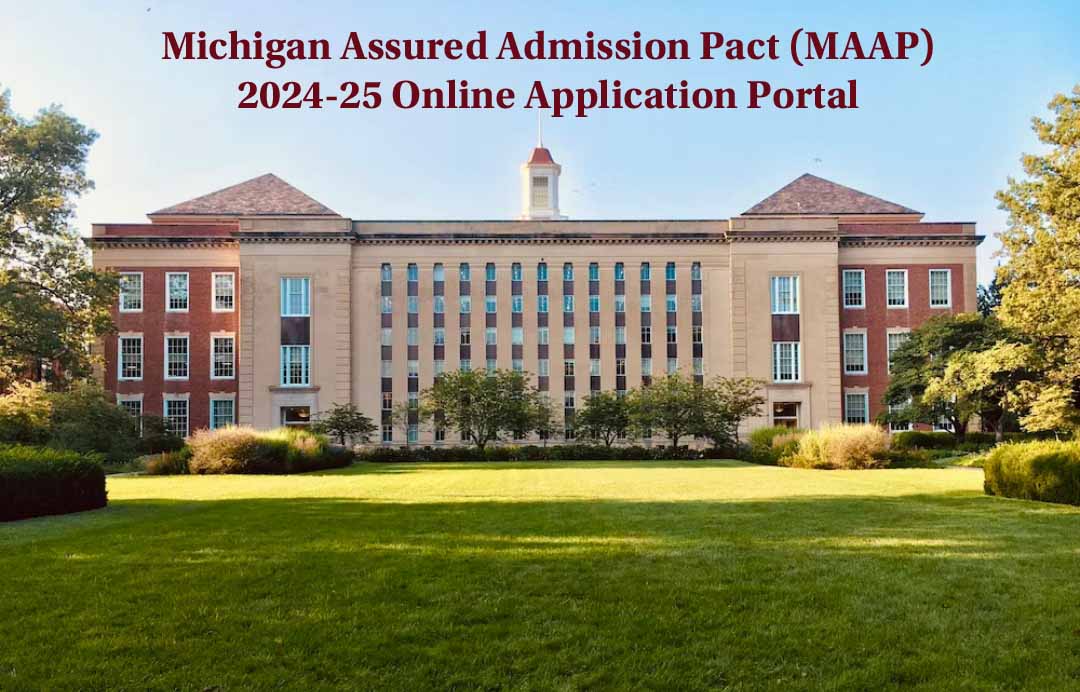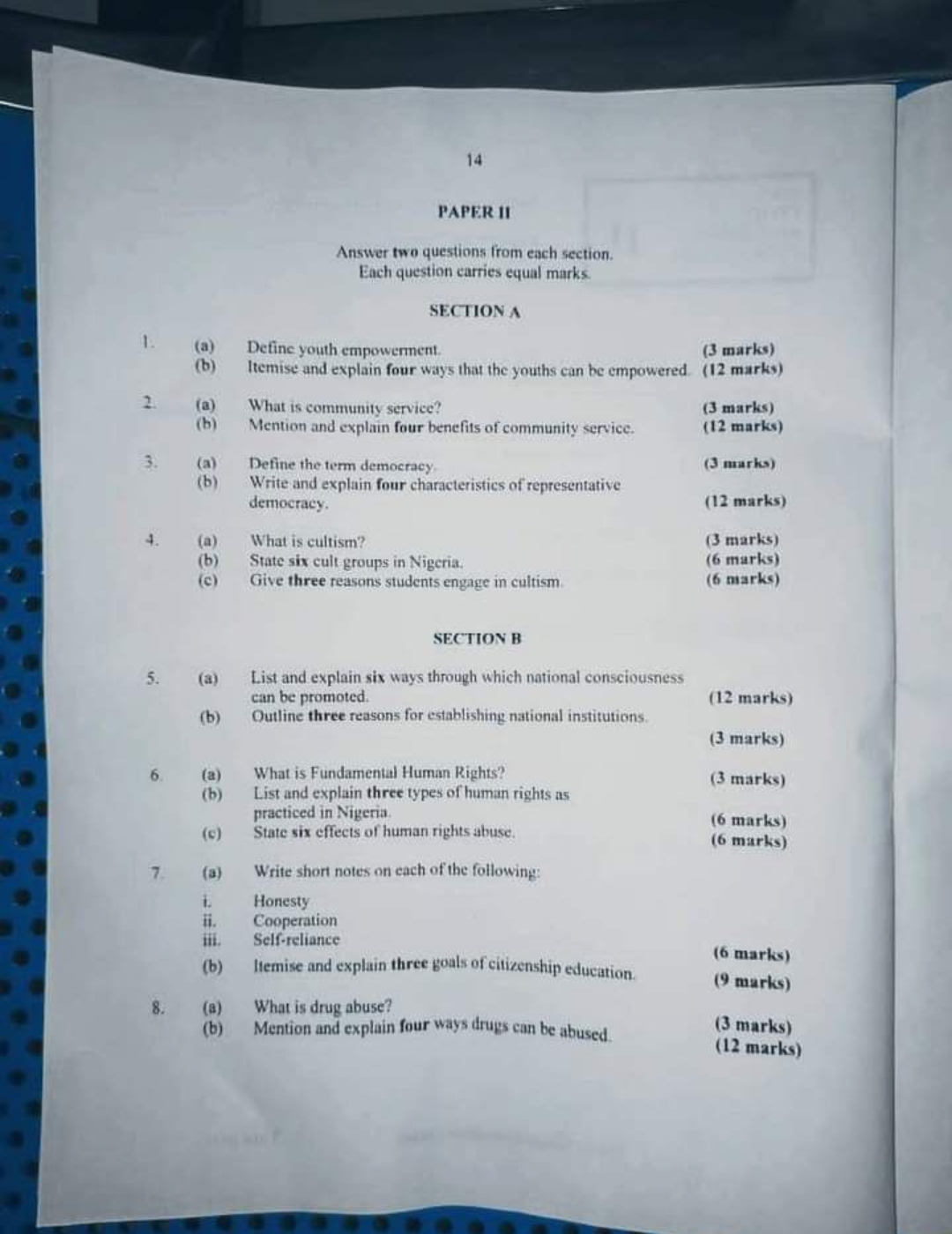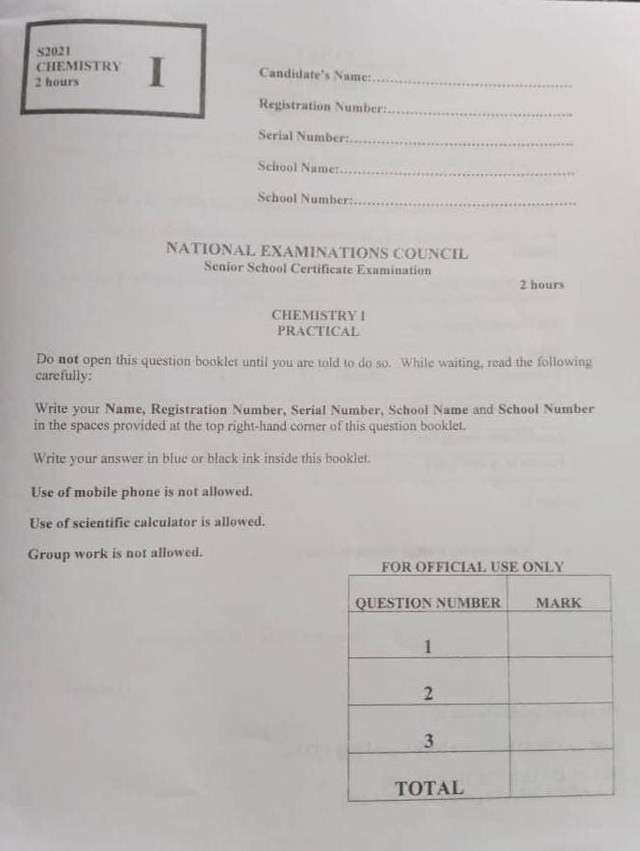The MAAP Application Form 2024-2025 is sponsored by the Michigan Assured Admission Pact (MAAP)
Considering signing up for the Michigan Assured Admission Pact (MAAP)? Exciting news! The MPPA Admission Online Application Portal for 2024 is open now, thanks to Michigan Assured Admission Pact (MAAP). If you’re curious about joining and making it happen, let’s dive in!
In this blog, we’ll break down the Michigan Assured Admission Pact (MAAP) Application Portal. Think of it as a helper for making decisions. Let’s keep it simple and easy to grasp.
About the Michigan Assured Admission Pact (MAAP).
The Michigan Assured Admission Pact (MAAP) is a program that simplifies the college admission process for Michigan high school students. It’s designed to make the transition from high school to college smoother and more predictable.
Here’s a breakdown of the key aspects of MAAP
Purpose of MAAP (Michigan Assured Admission Pact):
The main aim of MAAP is to provide high school students in Michigan with a clear pathway to college admission. It reduces uncertainty and ensures that students have assured options for continuing their education after graduation.
Check: UCLA Admission 2024: Check Application Portal
MAAP Participating Universities:
The Michigan Assured Admission Pact (MAAP) involves collaboration among several universities in the state. These participating universities have committed to the principles of MAAP, providing an assured admission pathway for eligible Michigan high school students.

Here is a list of some of the participating universities:
- Michigan State University (MSU):
- Located in East Lansing, MSU is a prominent public research university known for its diverse academic programs and commitment to community engagement.
- University of Michigan (U-M):
- With campuses in Ann Arbor, Dearborn, and Flint, the University of Michigan is a world-renowned institution offering a wide range of undergraduate and graduate programs.
- Wayne State University:
- Based in Detroit, Wayne State University is a comprehensive public university known for its strong emphasis on urban research and commitment to student success.
- Central Michigan University (CMU):
- CMU, located in Mount Pleasant, is a public research university that offers a broad spectrum of academic programs and emphasizes hands-on learning experiences.
- Eastern Michigan University (EMU):
- Situated in Ypsilanti, EMU is known for its diverse academic offerings and commitment to fostering a supportive learning environment.
- Western Michigan University (WMU):
- WMU, located in Kalamazoo, is a public research university recognized for its innovative programs and global engagement initiatives.
- Oakland University:
- Located in Rochester, Oakland University is known for its strong focus on undergraduate education and research opportunities.
- Michigan Technological University (Michigan Tech):
- Located in Houghton, Michigan Tech specializes in science, engineering, technology, and business programs, emphasizing hands-on experiences.
- Grand Valley State University (GVSU):
- Situated in Allendale, GVSU is known for its commitment to liberal education, sustainability, and a wide range of undergraduate and graduate programs.
- Ferris State University:
- Located in Big Rapids, Ferris State University offers a variety of programs with a focus on experiential learning and career preparation.
It’s important to note that the list above provides an overview, and there may be additional universities participating in MAAP. Prospective students are encouraged to check the official MAAP website or contact individual universities directly for the most up-to-date information on participating institutions and their respective admission criteria.
Michigan Assured Admission Pact Eligibility Criteria:
The eligibility criteria for the Michigan Assured Admission Pact (MAAP) are designed to provide a clear pathway for Michigan high school students seeking admission to participating universities. Understanding these criteria is essential for a successful application process. Here’s an overview of the key eligibility requirements:
1. High School Graduation:
- MAAP is specifically intended for students who are applying for admission for the first fall semester following their high school graduation. Eligibility is contingent upon successful completion of high school education.
2. Grade Point Average (GPA):
- Maintaining a minimum Grade Point Average (GPA) is a fundamental criterion for MAAP eligibility. While the specific GPA requirement may vary among participating universities, it generally serves as an indicator of academic achievement during high school.
3. Disciplinary and Criminal History:
- Some universities participating in MAAP may evaluate the disciplinary and/or criminal history of applicants. It’s important for students to be aware of these considerations, as they may impact eligibility. Checking the individual admission policies of each participating university is advisable.
4. English Proficiency for International Students:
- Students who complete part or all of their secondary education outside the United States or at a non-English medium school may be required to demonstrate English proficiency. This ensures that students have the language skills necessary for successful academic engagement.
5. First Fall Semester Admission:
- MAAP eligibility is tailored for students seeking admission for the first fall semester following their high school graduation. This ensures that the pact provides a clear and assured pathway for immediate entry into higher education.
6. Program-Specific Requirements:
- While MAAP ensures general eligibility for admission to participating universities, students applying to selective programs or majors may encounter additional requirements. These program-specific criteria may vary and often involve meeting certain academic benchmarks relevant to the chosen field of study.
7. Financial Considerations:
- MAAP emphasizes inclusivity, and financial barriers should not hinder eligibility. Some universities may not charge an application fee, and fee waivers for application fees may be available. Additionally, financial aid opportunities may exist to support eligible students in their pursuit of higher education.
8. Holistic Assessment:
- MAAP takes a holistic approach to assessing eligibility, considering various aspects of a student’s academic profile and background. This inclusive approach ensures that students from diverse backgrounds have equal opportunities to access higher education.
Understanding and meeting these eligibility criteria is crucial for prospective students applying through MAAP. It’s recommended that students review the specific requirements outlined by each participating university, as individual institutions may have additional criteria or considerations. By fulfilling the eligibility criteria, students can confidently pursue their higher education goals through the Michigan Assured Admission Pact.
Michigan Assured Admission Pact, MAAP Predictable Admission:
MAAP, which stands for the Michigan Assured Admission Pact, is like a promise that makes getting into certain Michigan universities more predictable for high school students.
Here’s how it works:
When you graduate from high school in Michigan, you can count on MAAP to help you get into specific universities for your first semester of college. It’s a way of making the admission process more straightforward and less uncertain.
To be eligible for MAAP, you generally need to have a certain grade point average (GPA) from high school. This GPA is like a summary of how well you did in your classes. MAAP also considers other factors, like whether you completed high school in the United States or if you have a history of breaking rules.
The cool thing about MAAP is that it’s designed to be fair and inclusive. It wants to give everyone a chance, no matter where they come from or their background. So, if you meet the requirements, you can be pretty confident about getting into a participating Michigan university for your first semester after high school.
MAAP makes going to college in Michigan more predictable, and that’s a good thing for students looking to take that next big step in their education journey.
Michigan Assured Admission Pact Streamlined Application Process:
The Michigan Assured Admission Pact (MAAP) makes applying to certain Michigan universities simpler and more straightforward.
Here’s how MAAP streamlines the application process:
- Clear Guidelines:
- MAAP provides clear guidelines for high school students in Michigan who want to apply to participating universities. It lays out the rules, making the application process easy to understand.
- Assured Admission:
- When you follow the rules set by MAAP, you’re assured admission to specific universities for your first semester after high school graduation. This predictability takes away some of the stress and uncertainty from the application process.
- Simplified Requirements:
- MAAP typically has straightforward requirements, such as maintaining a certain grade point average (GPA) in high school. This simplicity makes it easier for students to know if they meet the criteria.
- Inclusive Approach:
- MAAP is designed to be inclusive, giving students from different backgrounds an equal chance. It considers factors like where you completed high school and your behavior history, making the application process fair for everyone.
- Reduced Application Stress:
- Since MAAP assures admission based on specific criteria, you don’t have to worry as much about competing with other students for a spot. It takes some of the stress out of the application process, allowing you to focus on meeting the set requirements.
- Focused Entry Point:
- MAAP is specifically for your first semester after high school graduation. This focused entry point streamlines the process, ensuring that you have a clear path for immediate entry into higher education.
- Promoting Accessibility:
- By simplifying the application process, MAAP promotes accessibility to higher education. It encourages students to pursue college without unnecessary barriers, making the dream of attending a Michigan university more achievable.
Michigan Assured Admission Benefits for Students:
The Michigan Assured Admission Pact (MAAP) comes with several benefits for high school students in the state. Here’s a breakdown of the advantages that students can enjoy through MAAP:
- Assured College Entry:
- The primary benefit of MAAP is the assurance of admission to certain Michigan universities for the first semester after high school graduation. This predictability provides students with a clear path to higher education.
- Reduced Stress and Uncertainty:
- MAAP simplifies the college application process, reducing stress and uncertainty for students. Knowing that there’s a guaranteed spot in a university when specific criteria are met eases the burden often associated with college admissions.
- Streamlined Application Requirements:
- MAAP typically has straightforward and transparent application requirements, such as maintaining a specific grade point average (GPA). This simplicity makes it easier for students to understand and meet the criteria.
- Inclusive Opportunities:
- MAAP promotes inclusivity by considering various factors in the eligibility criteria. It aims to provide equal opportunities for students from different backgrounds, making higher education accessible to a broader range of individuals.
- Focused Entry Point:
- MAAP is designed for the first semester after high school graduation, providing a focused entry point into higher education. This allows students to start their college journey without unnecessary delays.
- Financial Considerations:
- MAAP may reduce financial barriers for students. Some universities may not charge an application fee, and fee waivers could be available, ensuring that financial constraints do not hinder students from applying.
- Encouragement for Immediate College Pursuit:
- By assuring admission for the first semester after high school, MAAP encourages students to pursue higher education immediately after graduation. This timely entry into college helps students stay on track with their academic and career goals.
- Collaboration among Participating Universities:
- MAAP fosters collaboration among participating universities, creating a shared commitment to transparent and fair admission practices. This collaborative effort benefits students by ensuring consistency in standards and practices.
- Clarity in College Planning:
- MAAP provides clarity in college planning, offering a reliable framework for students to follow. High school counselors can use MAAP as a tool to guide students through the complexities of college preparation.
- Accessibility to Higher Education:
- Overall, MAAP enhances accessibility to higher education by simplifying the application process and assuring admission to eligible students. It aligns with the goal of making college more achievable for a diverse range of students.
See also: Karachi University Admission 2024-2025: Online Application Portal
How To Apply for Michigan Assured Admission Pact (MAAP) Application Form 2024.
Applying for the Michigan Assured Admission Pact (MAAP) is a straightforward process designed to make the transition from high school to college more accessible.
Here’s a step-by-step guide on how to apply for the MAAP application form in 2024:
Step 1: Understand Eligibility Criteria:
- Familiarize yourself with the eligibility criteria outlined by MAAP. Typically, this includes graduating from a Michigan high school, maintaining a specified grade point average (GPA), and meeting other specific requirements.
Step 2: Gather Necessary Documents:
- Collect the necessary documents, such as your high school transcripts, standardized test scores, and any other materials required by the participating universities. Ensure that you have all the information needed to demonstrate your eligibility.
Step 3: Research Participating Universities:
- Explore the list of participating universities in MAAP. Understand the unique characteristics of each institution and ensure they offer the programs and environment that align with your educational goals.
Step 4: Access the MAAP Application Portal:
- Visit the official MAAP website or the individual websites of the participating universities to access the MAAP application portal. The portal is where you’ll initiate the application process.
Step 5: Create an Account:
- If required, create a user account on the MAAP application portal. This account will be used to manage your application, track your progress, and receive updates.
Step 6: Complete the Application Form:
- Fill out the MAAP application form with accurate and up-to-date information. Be prepared to provide details about your high school education, GPA, extracurricular activities, and any other relevant information requested.
Step 7: Submit Required Documents:
- Upload the necessary documents, such as transcripts and test scores, as part of your application. Ensure that all required materials are submitted to support your eligibility.
Step 8: Review and Confirm:
- Before submitting your application, review all the information you’ve provided to ensure accuracy and completeness. Confirm that you’ve uploaded all required documents.
Step 9: Submit Application:
- Once you are satisfied with your application, submit it through the MAAP application portal. You may receive a confirmation email acknowledging the successful submission of your application.
Step 10: Check for Updates:
- Regularly check your email, the MAAP portal, or any communication channels specified by the participating universities for updates on your application status. Be prompt in addressing any additional requirements or requests for information.
Step 11: Await Admission Decision:
- After submitting your application, await the admission decision from the participating universities. If you meet the eligibility criteria, you can expect assurance of admission for the first semester following high school graduation.


